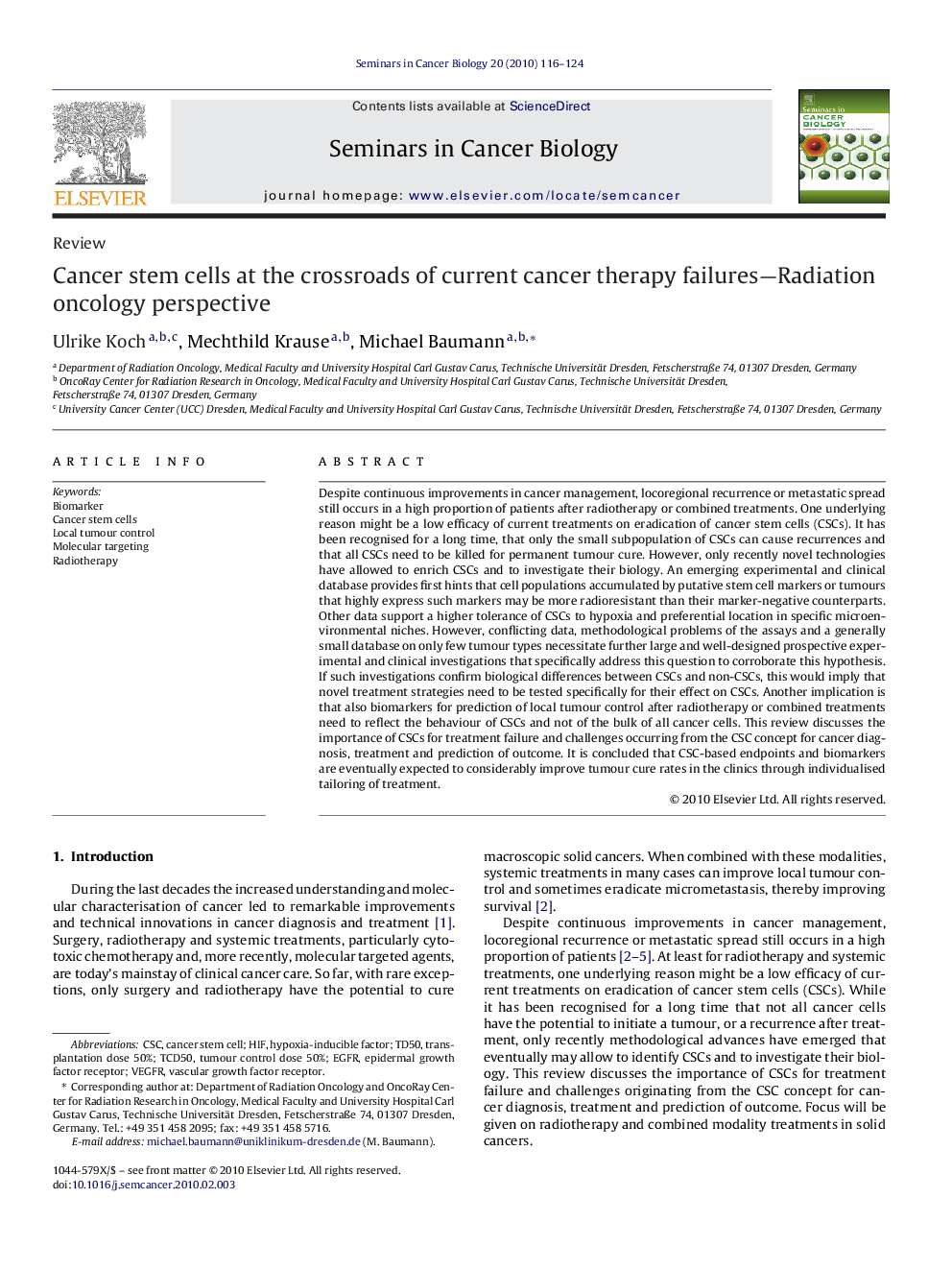| Article ID | Journal | Published Year | Pages | File Type |
|---|---|---|---|---|
| 2023902 | Seminars in Cancer Biology | 2010 | 9 Pages |
Despite continuous improvements in cancer management, locoregional recurrence or metastatic spread still occurs in a high proportion of patients after radiotherapy or combined treatments. One underlying reason might be a low efficacy of current treatments on eradication of cancer stem cells (CSCs). It has been recognised for a long time, that only the small subpopulation of CSCs can cause recurrences and that all CSCs need to be killed for permanent tumour cure. However, only recently novel technologies have allowed to enrich CSCs and to investigate their biology. An emerging experimental and clinical database provides first hints that cell populations accumulated by putative stem cell markers or tumours that highly express such markers may be more radioresistant than their marker-negative counterparts. Other data support a higher tolerance of CSCs to hypoxia and preferential location in specific microenvironmental niches. However, conflicting data, methodological problems of the assays and a generally small database on only few tumour types necessitate further large and well-designed prospective experimental and clinical investigations that specifically address this question to corroborate this hypothesis. If such investigations confirm biological differences between CSCs and non-CSCs, this would imply that novel treatment strategies need to be tested specifically for their effect on CSCs. Another implication is that also biomarkers for prediction of local tumour control after radiotherapy or combined treatments need to reflect the behaviour of CSCs and not of the bulk of all cancer cells. This review discusses the importance of CSCs for treatment failure and challenges occurring from the CSC concept for cancer diagnosis, treatment and prediction of outcome. It is concluded that CSC-based endpoints and biomarkers are eventually expected to considerably improve tumour cure rates in the clinics through individualised tailoring of treatment.
